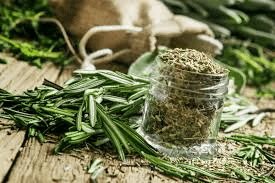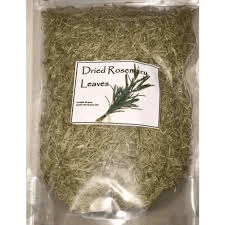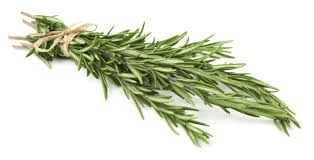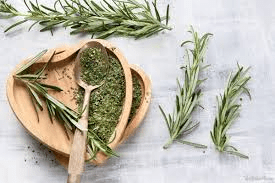Rosemary is a popular herb known for its aromatic leaves and various culinary and medicinal uses. Processing, packaging, and exporting rosemary involve several key steps to ensure the herb remains fresh and maintains its quality throughout its journey from farm to international markets. In this guide, we will explore each stage of this process in detail, from harvesting the rosemary to preparing it for export.
The first step in processing rosemary is harvesting it at the right time. Rosemary is typically harvested when the plant is in full bloom and the leaves are at their peak flavor. This usually occurs in the spring or early summer. To harvest, cut the stems of the rosemary plant using clean, sharp scissors or pruning shears. It’s important to handle the plant gently to avoid damaging the leaves or stems. Harvesting should be done in dry weather to prevent moisture from affecting the quality of the herb.
After harvesting, the rosemary needs to be cleaned to remove any dirt or debris. This is done by rinsing the stems under cool, running water. Gently shake the rosemary to remove excess water, but be careful not to bruise or break the leaves. For larger batches, a gentle wash in a large sink or tub can be more efficient. Once cleaned, the rosemary should be spread out on clean towels or racks to air dry. It’s crucial to ensure that the rosemary is thoroughly dried before moving on to the next step to prevent mold or mildew growth.
Drying rosemary is a critical step in preserving its flavor and extending its shelf life. There are several methods to dry rosemary, including air drying, using a dehydrator, or employing an oven. Air drying involves hanging bunches of rosemary in a well-ventilated area away from direct sunlight. This method can take several days to a week, depending on the humidity and temperature of the environment.
A dehydrator offers a faster method by removing moisture through controlled heat and airflow. Spread the rosemary leaves on the dehydrator trays, ensuring they are not overcrowded. Follow the manufacturer’s instructions for drying times and temperatures, typically around 95°F to 115°F (35°C to 46°C).
If using an oven, set it to the lowest possible temperature, usually around 100°F to 140°F (38°C to 60°C). Place the rosemary on a baking sheet in a single layer, and leave the oven door slightly ajar to allow moisture to escape. The drying process can take several hours, so it’s important to check the rosemary frequently to prevent overheating or burning.
Once the rosemary is dried, it needs to be processed to prepare it for packaging and export. Begin by removing the dried leaves from the stems. This can be done by hand, or for larger quantities, a mechanical leaf stripper can be used. The leaves should be crumbled or ground to the desired size, depending on their intended use. For whole leaf products, ensure the leaves are intact and not overly crushed.
Packaging rosemary is essential to maintain its freshness and prevent contamination. Choose packaging materials that are moisture-resistant and provide an airtight seal, such as vacuum-sealed bags or glass jars with tight-fitting lids. For bulk packaging, consider using sturdy cardboard boxes lined with moisture-absorbent materials. Label the packages clearly with information about the product, including the type of rosemary, the date of processing, and any relevant quality or safety certifications.
Ensure that the packaging process is done in a clean environment to avoid introducing contaminants. The rosemary should be packed in a way that prevents crushing or breakage. For export purposes, it’s also important to follow any specific regulations or standards required by the destination country. This might include specific labeling requirements, certificates of origin, or compliance with phytosanitary regulations.
Exporting rosemary involves several logistical considerations to ensure the herb reaches international markets in optimal condition. Start by researching the regulations and requirements of the destination country. This includes understanding import tariffs, quality standards, and any necessary documentation. Common documents needed for export include a commercial invoice, packing list, and phytosanitary certificate.
Coordinate with a reliable shipping company experienced in handling agricultural products. Choose a shipping method that minimizes transit time and maintains the quality of the rosemary. Air freight is often preferred for its speed, but sea freight can be more cost-effective for larger shipments. Properly prepare the rosemary for transit by ensuring it is well-packaged and protected against potential damage during shipping.
Throughout the export process, maintain clear communication with your shipping partners and customers to address any issues promptly. Tracking shipments and providing updates to buyers can help manage expectations and build trust.
How to Process Rosemary for Exportation

1. Harvesting: Harvest rosemary when it is in full bloom, typically in late summer or early fall. Use sharp shears to cut the stems, ensuring you leave some of the plant intact for future growth.
2. Cleaning: Rinse the harvested rosemary under cold water to remove any dirt or debris. Shake off excess water and pat dry with clean towels to prevent mold growth.
3. Sorting: Sort the rosemary by quality. Remove any damaged or discolored stems. This helps ensure that only the best quality rosemary is processed and exported.
4. Drying: Dry rosemary to preserve its flavor and prevent spoilage. You can air-dry it by hanging it upside down in a dry, well-ventilated area, or use a food dehydrator. Ensure the drying environment is clean to avoid contamination.
5. Storing: Store dried rosemary in airtight containers in a cool, dark place. This helps maintain its potency and prevents it from losing its flavor and aroma.
6. Grinding (optional): If needed, grind dried rosemary into a fine powder using a spice grinder. This is useful if you are exporting rosemary as a spice or seasoning.
7. Quality Control: Before export, inspect the rosemary for any signs of mold, pests, or other contaminants. Ensure it meets the quality standards required by the destination country.
8. Packaging: Package the rosemary securely to protect it during transit. Use moisture-proof and durable materials to prevent any damage.
9. Documentation: Prepare the necessary export documentation, including certificates of origin, phytosanitary certificates, and any other required paperwork. This ensures compliance with international trade regulations.
10. Shipping: Arrange for shipping with a reliable logistics provider. Ensure the rosemary is transported under suitable conditions to maintain its quality throughout the journey.
Read Also: How to Prepare a Cow for Calving
How to Package Rosemary for Exportation

1. Choose Packaging Materials: Select appropriate packaging materials such as vacuum-sealed bags, foil-lined pouches, or plastic containers. These materials help protect the rosemary from moisture, light, and air.
2. Measure Portions: Decide on the portion sizes based on market demand and packaging standards. Common sizes include small bags for retail or bulk containers for wholesale.
3. Seal Packages: Seal the packages tightly to prevent any leakage or contamination. For vacuum-sealed bags, use a vacuum sealer to remove air and ensure freshness.
4. Label Packages: Clearly label each package with essential information such as product name, weight, and country of origin. Include any additional details required by the importing country.
5. Include Documentation: Place copies of necessary export documents inside the packages or attach them to the shipment. This includes certificates of origin and any quality assurance certificates.
6. Inspect Packaging: Check that all packages are securely sealed and properly labeled. This helps avoid issues during customs inspection and ensures the rosemary reaches its destination in good condition.
7. Palletizing (if applicable): For large shipments, arrange the packages on pallets. Ensure they are stacked evenly and secured with straps to prevent shifting during transport.
8. Use Proper Cushioning: If shipping in bulk or in fragile containers, use cushioning materials like bubble wrap or packing peanuts to protect the rosemary from impact.
9. Maintain Cleanliness: Ensure that the packaging area is clean and free from contaminants. This helps maintain the quality of the rosemary and avoids cross-contamination.
10. Store Packages: Store the packaged rosemary in a cool, dry place until it is ready for shipment. Avoid exposing it to direct sunlight or extreme temperatures.
How to Export Rosemary for Profits
1. Market Research: Conduct thorough market research to identify potential markets and understand demand for rosemary. Look for countries with a high demand for culinary herbs or essential oils.
2. Understand Regulations: Familiarize yourself with the export regulations and requirements of the target market. This includes understanding tariffs, import restrictions, and quality standards.
3. Find Buyers: Reach out to potential buyers or importers in your target market. Attend trade shows, join export associations, and use online platforms to connect with buyers.
4. Set Pricing: Determine competitive pricing for your rosemary based on market conditions, production costs, and profit margins. Ensure your pricing strategy aligns with market expectations.
5. Negotiate Terms: Negotiate terms with buyers, including payment terms, delivery schedules, and contract conditions. Ensure both parties agree on the terms before finalizing the export deal.
6. Secure Logistics: Arrange for reliable logistics and transportation to ensure timely and safe delivery of your rosemary. Choose logistics providers with experience in handling agricultural products.
7. Monitor Quality: Continuously monitor the quality of your rosemary to meet export standards. Implement quality control measures to address any issues promptly.
8. Handle Documentation: Accurately complete all required export documentation and comply with international trade regulations. This includes preparing invoices, packing lists, and certificates of origin.
9. Promote Your Product: Invest in marketing and promotion to increase visibility and attract more buyers. Use online marketing, social media, and trade publications to reach a wider audience.
10. Evaluate and Adjust: Regularly review your export performance and customer feedback. Make adjustments to your strategy as needed to improve profitability and expand your market reach.
Read Also: 15 Unique Facts about Goats
Frequently Asked Questions (FAQ’s) About Rosemary

1. What is rosemary used for? Rosemary is commonly used in cooking as a seasoning for various dishes. It is also used in herbal medicine and for making essential oils.
2. How should rosemary be stored? Rosemary should be stored in a cool, dry place in airtight containers to maintain its freshness and aroma.
3. Can rosemary be grown indoors? Yes, rosemary can be grown indoors in pots or containers, provided it receives plenty of sunlight and proper care.
4. What are the health benefits of rosemary? Rosemary is known for its potential benefits, including improving digestion, reducing inflammation, and enhancing memory and concentration.
5. How long does dried rosemary last? Dried rosemary typically lasts up to 1-2 years if stored properly in an airtight container away from light and moisture.
6. Can rosemary be used fresh or dried in recipes? Both fresh and dried rosemary can be used in recipes, though fresh rosemary has a more intense flavor compared to dried.
7. How do I know if rosemary has gone bad? If rosemary has a musty smell, visible mold, or an off taste, it may have gone bad and should be discarded.
8. Is rosemary safe for pets? Rosemary is generally safe for pets in small amounts, but high doses can cause digestive upset. Consult with a veterinarian for specific advice.
9. Can rosemary be used in essential oils? Yes, rosemary is commonly used to make essential oils, which are used in aromatherapy and for various health benefits.
10. How can I incorporate rosemary into my diet? Rosemary can be used to season meats, vegetables, and soups, or added to bread and pasta dishes for added flavor.
Read Also: How to Grow Tomatoes in Containers

